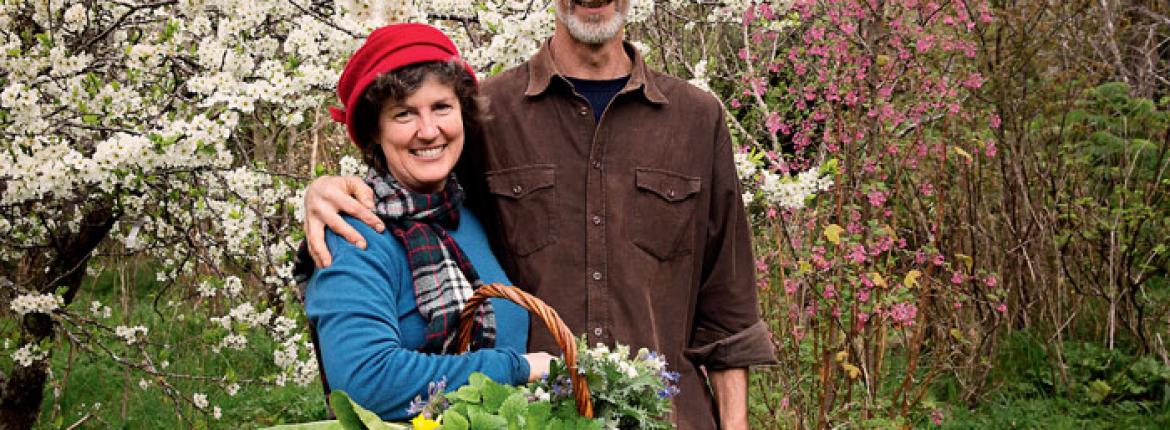Once they’re mature, these forests will require minimum maintenance and will continue to drop fruit and berries for many years to come.
The best ‘food forest’ is multi-layered, meaning it has fruit and nut trees, shrubs and berries, flowers to encourage beneficial insects, and vegetables and culinary herbs growing on the forest floor. This style of planting mimics stable forest ecosystems, so puts diversity and resilience back into our food system which has, over the past
100 years, become focused on single crops of fewer varieties.
Two excellent food forests taking shape are in Riverton, run by Robyn and Robert Guyton. The Guytons’ home forest garden has been in development for 15 years and, four years ago, they began a town forest garden for the South Coast Environment Society. This garden is already home to 50 fruit trees, berry bushes, vines, perennial vegetables and more.
“Our home forest features native trees as a canopy,” Robert says. “Fruit trees, such as apples, pears, plums, peaches, nashi, feijoa and fig form the next fruiting layer; berries such as blackcurrants, gooseberries and New Zealand cranberries are at the next layer; large umbelliferous herbs, broadleaf perennials – such as comfrey – then culinary herbs grow closer to the ground. Amongst those, we grow our annual vegetables and bee-friendly annual flowers.”
Vines of all sorts climb through the forest: grapes, kiwifruit, Manchurian gooseberries and so on.
“It looks wild by design, but is an excellent example of what a food forest is. It will be open to the public at all times and we are designing interpretive panels to explain its function,” says Robert.
Once established, the ongoing demands of a forest garden are fairly minor, the couple says. Although harvest time is busy, pruning and some maintenance is all that’s required during the year. The town garden has a lot of help from people in the community, which goes to show how invested they are in seeing it become successful and the Guytons anticipate it will start supplying locals with produce soon.
The Food Forest website provides more information on food growing projects.
Reported for our AA Directions Summer 2013 issue




